
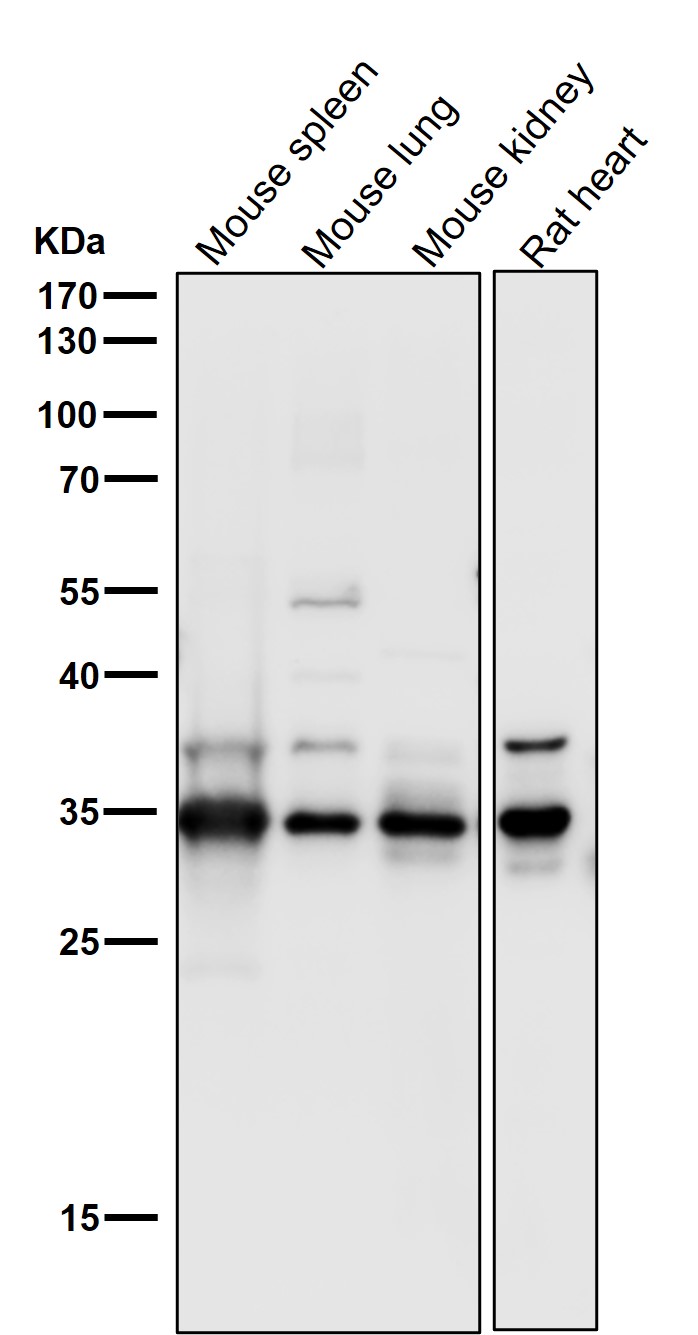
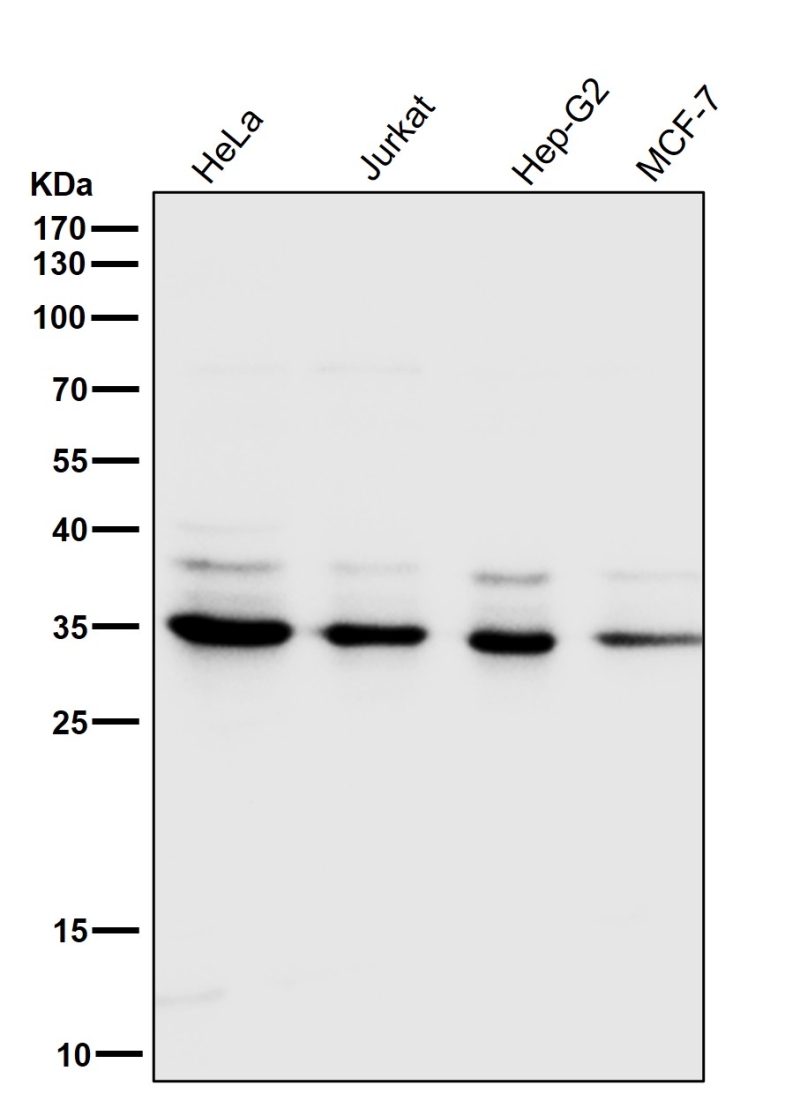
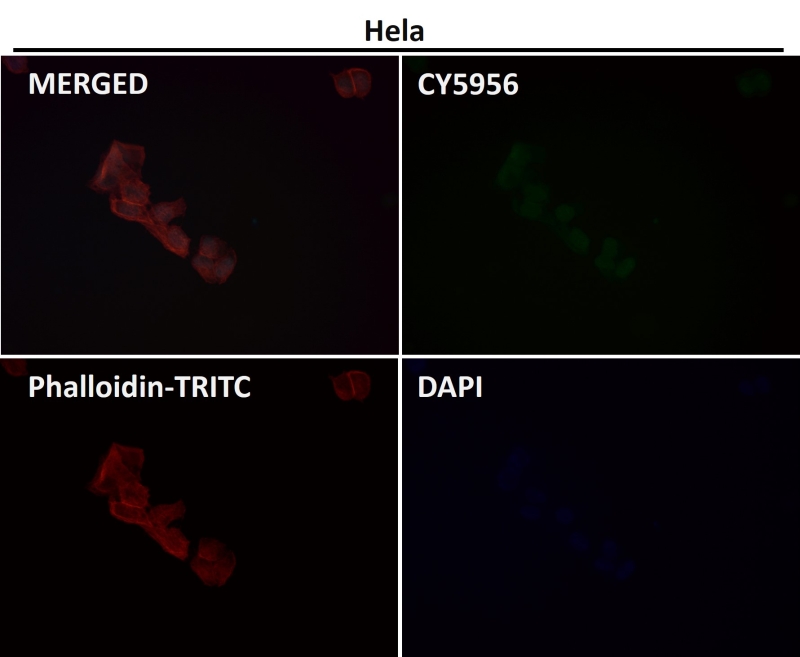
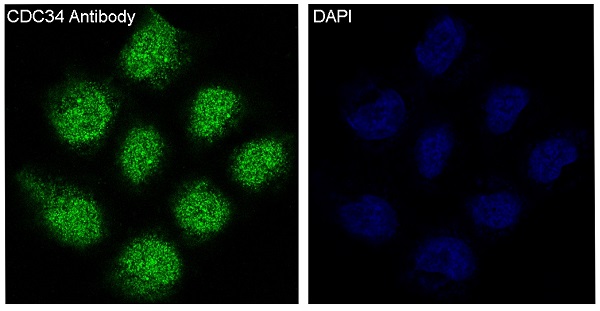
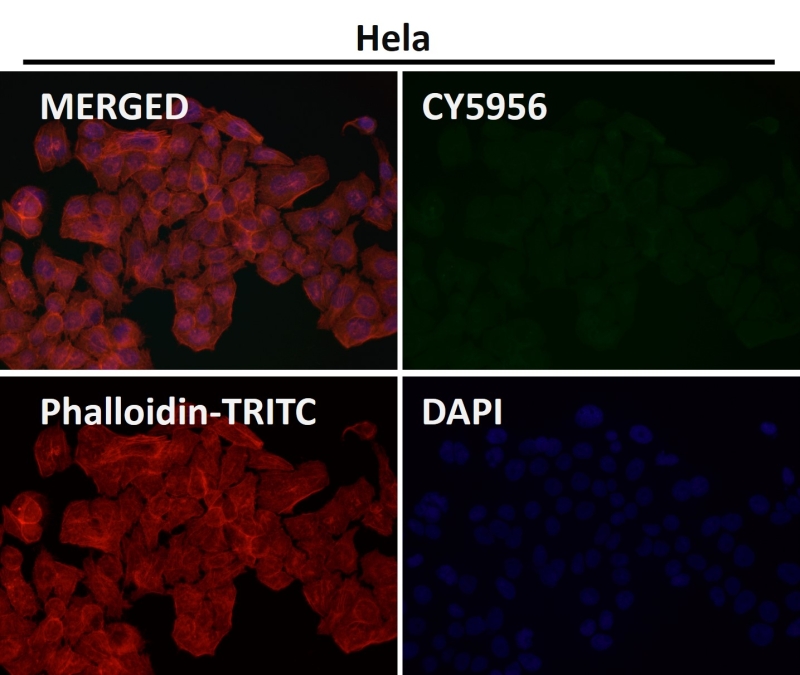
| WB | 咨询技术 | Human,Mouse,Rat |
| IF | 1/20-1/50 | Human,Mouse,Rat |
| IHC | 咨询技术 | Human,Mouse,Rat |
| ICC | 1/50-1/200 | Human,Mouse,Rat |
| FCM | 1/20-1/100 | Human,Mouse,Rat |
| Elisa | 咨询技术 | Human,Mouse,Rat |
| Aliases | CDC34; Cell division cycle 34; UBC3; UBCH3; Ubiquitin-protein ligase R1; UBE2R1; E2-CDC34; Ubiquitin carrier protein;;CDC34 |
| WB Predicted band size | Calculated MW: 27 kDa ; Observed MW: 35 kDa |
| Host/Isotype | Rabbit IgG |
| Antibody Type | Primary antibody |
| Storage | Store at 4°C short term. Aliquot and store at -20°C long term. Avoid freeze/thaw cycles. |
| Species Reactivity | Human,Mouse,Rat |
| Immunogen | A synthesized peptide derived from human CDC34 |
| Formulation | Purified antibody in PBS with 0.05% sodium azide,0.05% BSA and 50% glycerol. |
+ +
以下是3篇与Cdc34抗体相关的文献概览:
---
1. **文献名称**: *SCF and Cdc34: A Role for Phosphorylation in Ubiquitination*
**作者**: Verma, R. et al.
**摘要**: 研究Cdc34在SCF复合体介导的泛素化中的功能,通过Cdc34抗体检测其磷酸化状态,揭示磷酸化对酶活性的调控作用。
---
2. **文献名称**: *Cdc34 Self-Association and Phosphorylation Regulate Its Interaction with Ubiquitin-Conjugating Enzymes*
**作者**: Zhang, B. & Deshaies, R.J.
**摘要**: 利用Cdc34特异性抗体进行免疫共沉淀实验,证明其自身寡聚化及磷酸化修饰影响与其他泛素结合酶的相互作用,进而调控底物泛素化效率。
---
3. **文献名称**: *Cdc34 Is Required for DNA Damage-Dependent Ubiquitination of BRCA1*
**作者**: Jin, J. et al.
**摘要**: 通过Western blot和免疫荧光技术(使用Cdc34抗体),发现Cdc34在DNA损伤应答中促进BRCA1泛素化,揭示其在基因组稳定性中的关键作用。
---
如需更多文献或具体应用场景,可进一步补充说明!
Cdc34 is a ubiquitin-conjugating enzyme (E2) critical for cell cycle regulation, particularly in the progression from the G1 to S phase. It functions as part of the SCF (Skp1-Cullin-F-box) E3 ubiquitin ligase complex, targeting substrates like cyclin-dependent kinase inhibitors (e.g., p27) for proteasomal degradation via polyubiquitination. First identified in *Saccharomyces cerevisiae*, Cdc34 homologs are conserved in eukaryotes, including humans (CDC34B). Dysregulation of Cdc34 is implicated in cancers, as aberrant ubiquitination disrupts cell cycle checkpoints, promoting uncontrolled proliferation.
Cdc34 antibodies are essential tools for studying its expression, localization, and interactions. These antibodies are widely used in techniques such as Western blotting, immunoprecipitation, and immunofluorescence to investigate Cdc34's role in cell cycle dynamics, DNA damage responses, and oncogenesis. Commercial Cdc34 antibodies are typically raised against epitopes in conserved regions (e.g., human residues 1-150) and validated for specificity using knockout controls. Cross-reactivity with homologs in model organisms (e.g., mice, rats) enhances their utility in translational research.
Research applications include exploring Cdc34's interaction with SCF components, substrate recognition mechanisms, and its potential as a therapeutic target. Challenges remain in distinguishing isoforms (e.g., CDC34A vs. B) and detecting post-translational modifications (e.g., phosphorylation) that regulate its activity. Validated Cdc34 antibodies thus support both basic and clinical studies aiming to unravel cell cycle pathologies.
×